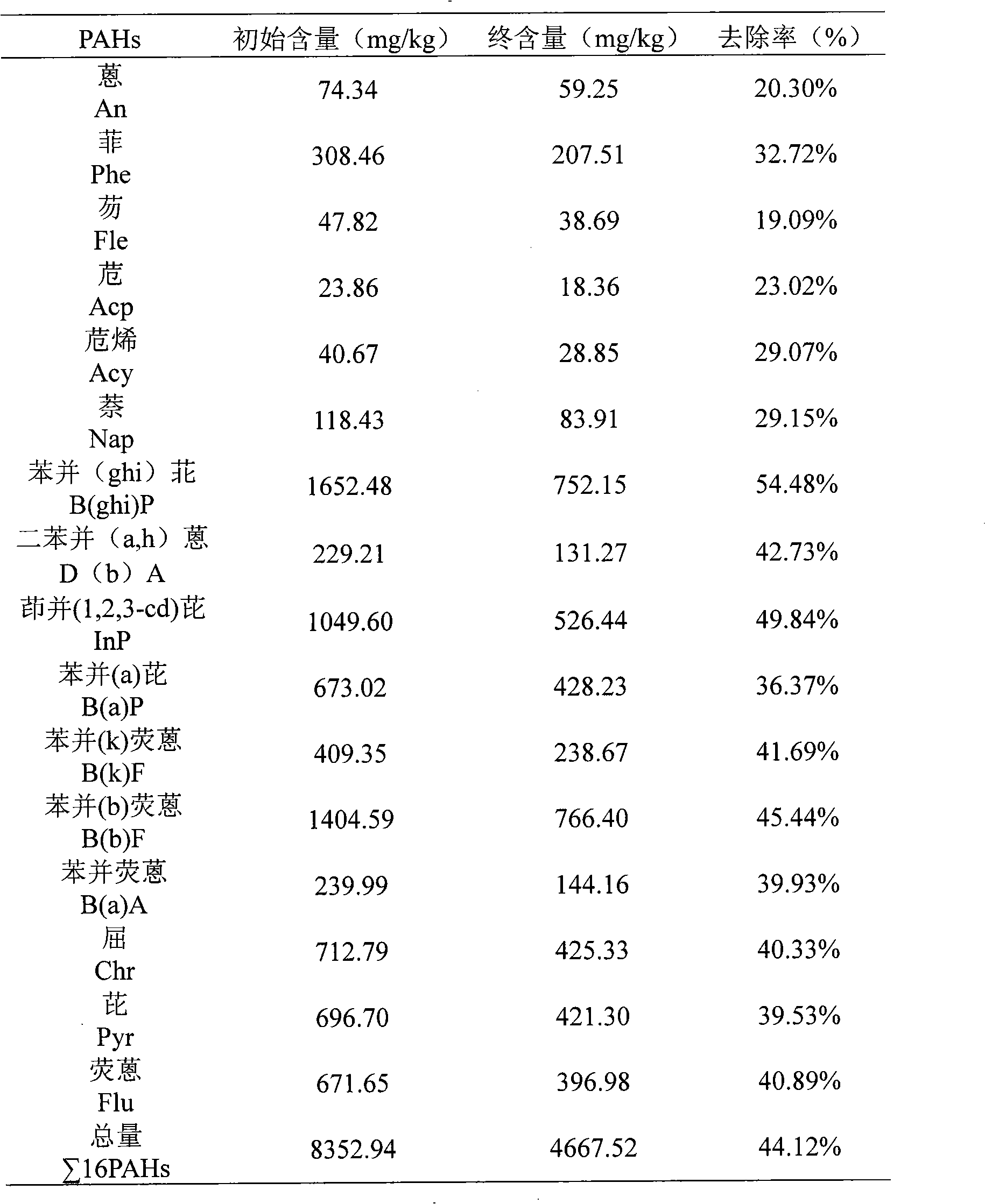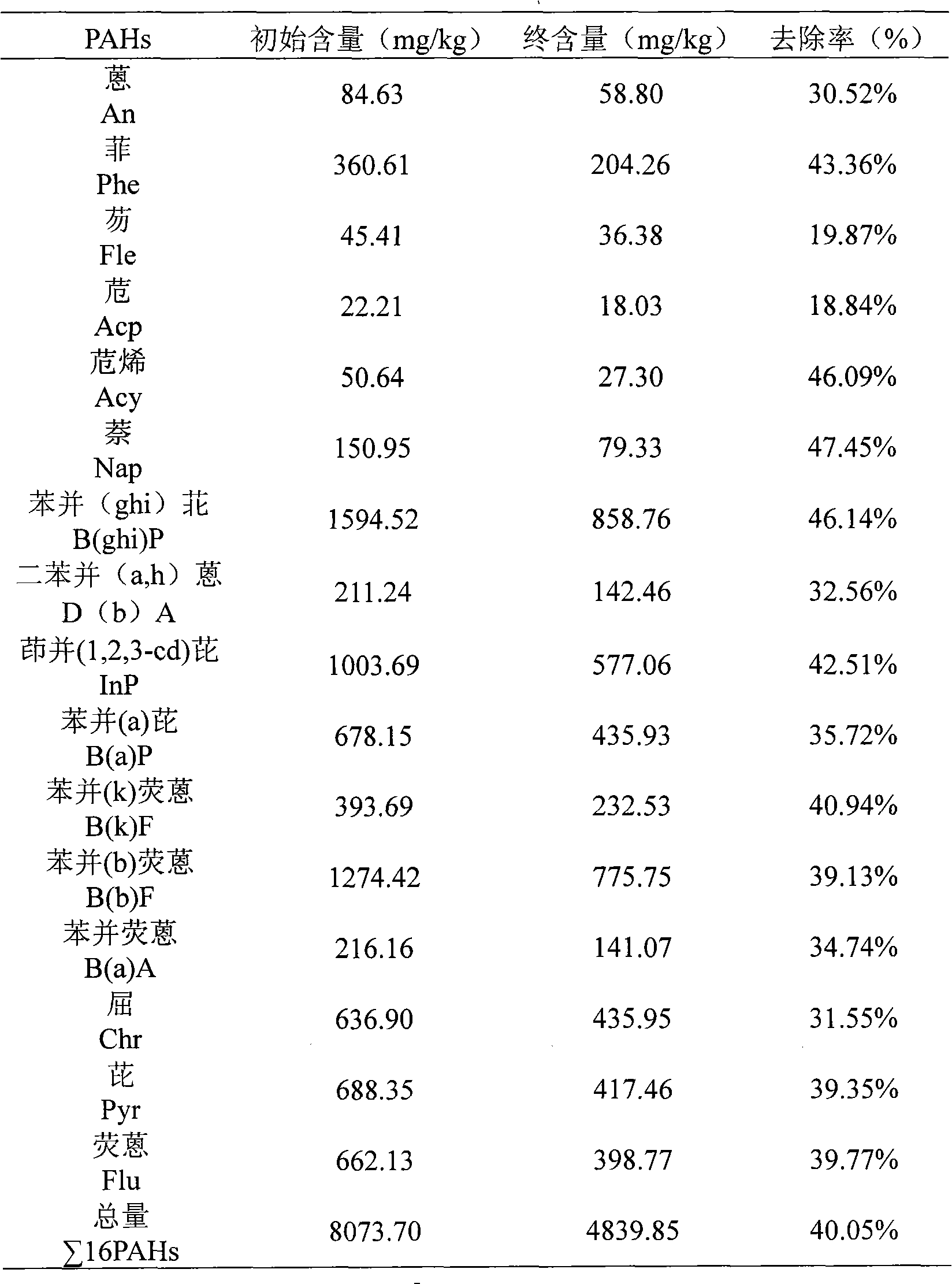Method for restoring polycyclic aromatic hydrocarbon contaminated soil by charcoal
A technology for polluted soil and polycyclic aromatic hydrocarbons, applied in the field of polluted soil remediation, can solve the problems of no relevant research reports, secondary pollution, affecting the remediation effect, etc., and achieves low management requirements, soil fertility can be improved, and the operation process is simple. Effect
- Summary
- Abstract
- Description
- Claims
- Application Information
AI Technical Summary
Problems solved by technology
Method used
Image
Examples
Embodiment 1
[0019] Embodiment 1: Using chicken manure as a raw material, the chicken manure was retrieved from the chicken factory, dried, and stored for later use. Put the dried chicken manure in a high-temperature-resistant airtight container, heat it at 400°C for 5 hours under anaerobic conditions, and cool it down to room temperature naturally. The soil was collected from PAHs-contaminated soil around Sanming Iron and Steel Plant in Fujian Province. After the soil is taken back, clean up debris, grass roots and other sundries, pass through a 5mm soil sieve, put into cultivation tanks, 4kg per tank, crush the prepared chicken manure biochar into 2mm particles, and mix it with the polluted soil according to the ratio of 3%. Mix evenly, treat under natural conditions for 170 days, and keep the soil water content between 12-15% during the treatment. After the treatment, the PAHs content was determined. The samples were pretreated by Soxhlet extraction method, and the content of PAHs was...
Embodiment 2
[0022] Embodiment 2: Utilize duck manure as raw material, take back duck manure from duck farm, dry, store for later use. Put the dried duck manure in a high-temperature-resistant airtight container, heat it at 450°C for 4.5 hours under anaerobic conditions, and cool it down to room temperature naturally. The soil was collected from PAHs-contaminated soil around Sanming Iron and Steel Plant in Fujian Province. After the soil is taken back, clean up debris, grass roots and other sundries, pass through a 5mm soil sieve, put into cultivation tanks, 4kg per tank, crush the prepared chicken manure biochar into 5mm particles, and mix it with the polluted soil according to the ratio of 6%. Mix evenly, treat under natural conditions for 170 days, and keep the soil water content between 13-17% during the treatment. After the treatment, the PAHs content was determined. The samples were pretreated by Soxhlet extraction method, and the content of PAHs was determined by GC-MS. The exper...
Embodiment 3
[0025] Embodiment 3: Using pig manure as a raw material, take back the pig manure from the pig farm, dry it, and store it for later use. Put the dried pig manure in a high-temperature-resistant airtight container, heat it at 500°C for 4 hours under anaerobic conditions, and cool it down to room temperature naturally. The soil was collected from PAHs-contaminated soil around Sanming Iron and Steel Plant in Fujian Province. After the soil is taken back, clean up debris, grass roots and other sundries, pass through a 5mm soil sieve, put into cultivation tanks, 4kg per tank, crush the prepared pig manure biochar into 2mm particles, and mix with polluted soil at a ratio of 5%. Mix evenly, treat under natural conditions for 150 days, and keep the soil water content between 10-13% during the treatment. After the treatment, the PAHs content was determined. The samples were pretreated by Soxhlet extraction method, and the content of PAHs was determined by GC-MS. The experimental res...
PUM
 Login to View More
Login to View More Abstract
Description
Claims
Application Information
 Login to View More
Login to View More - R&D
- Intellectual Property
- Life Sciences
- Materials
- Tech Scout
- Unparalleled Data Quality
- Higher Quality Content
- 60% Fewer Hallucinations
Browse by: Latest US Patents, China's latest patents, Technical Efficacy Thesaurus, Application Domain, Technology Topic, Popular Technical Reports.
© 2025 PatSnap. All rights reserved.Legal|Privacy policy|Modern Slavery Act Transparency Statement|Sitemap|About US| Contact US: help@patsnap.com



